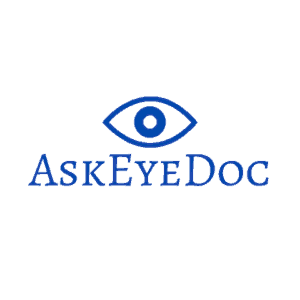Written By: Dr. Stephanie Mulick, O.D.
Our eyes are designed to use light to perceive the world in front of us. When the UV rays of the sun enter our eyes much of it is absorbed by the front surface of the eye, the cornea and the lens. A small amount of the suns rays are able to transmit the lens and hit the retina inside our eyes.
In a child’s eye, the tissue of the eyes is clearer than that of an adult and therefore allows more UV light to penetrate into the eye. According to the Journal of Exposure Science and Environmental Epidemiology, a child’s eye can penetrate as much as 2.5 times more UV radiation than that of an adult eye. This means that more UV can get into the eye, which can lead to ocular problems later in life. School-age children tend to spend more time outdoors than adults, giving them more time for UV to penetrate the eyes.
So, why does this matter?
Just as UV radiation can cause skin damage, increasing our risk for skin cancer over years, it can also put us at risk for developing ocular conditions such as pinguecula, pterygium, cataracts, eyelid and ocular cancer and even increase our risk for macular degeneration.
Encouraging children to wear sunglasses that block 99-100% of UVA and UVB at a young age can get them into a lifelong habit that can help prevent ocular conditions later in life.
How to choose sunglasses for my child
I have an article on sunglasses that goes into more detail (click here to view).
Not all sunglasses are created equally. Sunglasses can be purchased just about anywhere, I’ve even seen them in my local supermarket, but how do we know they are good quality? The price tag can be a good indication. That being said, you don’t have to buy designer frames for your children to get quality lenses, but I would stay away from over-the-counter glasses that don’t have a UV protection statement. Some inexpensive lenses can actually cause more eye strain or even distorted vision.
Make sure the frame fits your child’s face. If purchasing an over-the-counter sunglass, it is best to try to have your child’s eye right in the center of the lens to prevent visual distortion. When purchasing glasses from an Optical/Optometry shop, the lenses will be measured so that the center of the lens corresponds with the pupil of the eye.
Just like sunscreen comes in varying SPF protection levels, sunglasses do the same. For the most protection, make sure your sunglasses block 99-100% of UVA and UVB. However, even while wearing sunglasses we can still experience the effects of UV due to the rays coming in through the top, sides or even the bottom of the frame via reflected light. If sunglasses do not fit snug you may want to consider wearing a hat to get added protection.
Choose Polycarbonate lenses. Polycarbonate lenses are not only shatter-proof making them the best choice for children but they also provide 100% UV protection.

What is UV Index and why is it important?
The UV index is a measurement of how much UV we are exposed to when outside. Even on a cloudy day, the UV index can remain high. You can ask the personal assistant on your mobile phone, Ask Alexa or just google the UV index each day. The higher the number, the more likely for skin and ocular damage. When the UV index is high, it is very important to take precautions to avoid sunburn to the skin and eyes.
UV Index classifications
| UV Index | UV exposure (low to high) |
| 1-2 | Low |
| 3-5 | Moderate |
| 6-7 | High |
| 8-10 | Very High |
| 11+ | Extreme |
How to lessen you and your families risk of UV exposure
- Follow the CDC (Center for Disease Control and Prevention) guidelines
- Wear a long sleeve shirt or rash guard that has UV protection
- Apply SPF sunscreen of 15 or higher (the higher number provides more UV Protection)
- Wear a hat
- Use an umbrella or the stroller canopy
- Sit in the shade
The Bottom Line
It is never too early to get your child into the habit of wearing sunglasses. Sunglasses should fit your child’s face and have 99-100% UVA/UVB protection and be made from polycarbonate shatterproof lenses. Most sunglasses in the United States meet this standard, but it is best to look for the UV protection sticker to know what you are getting.


